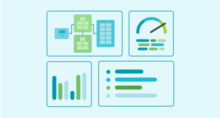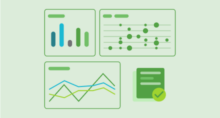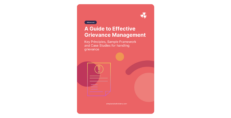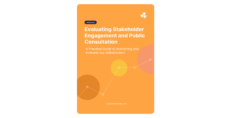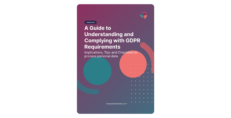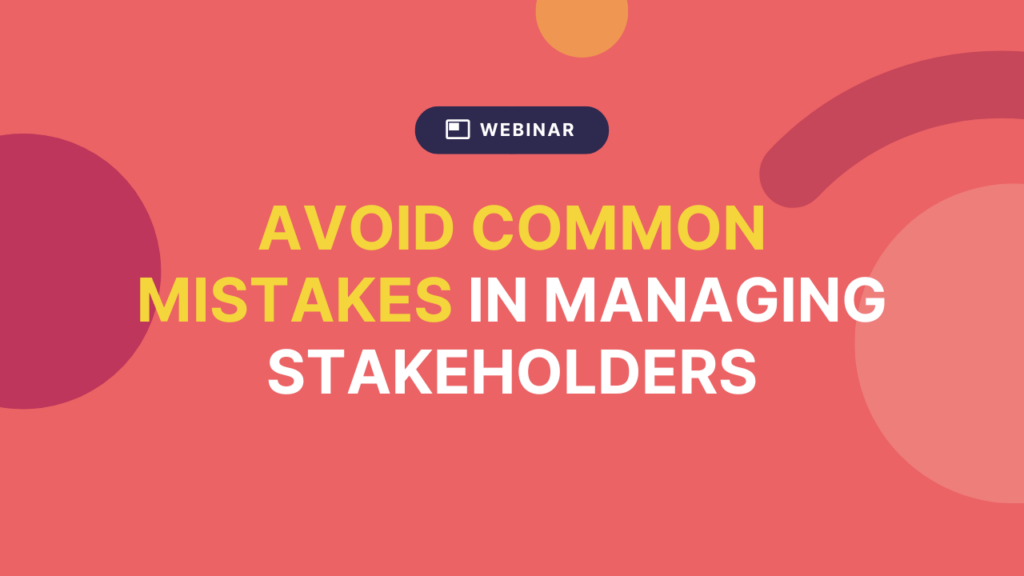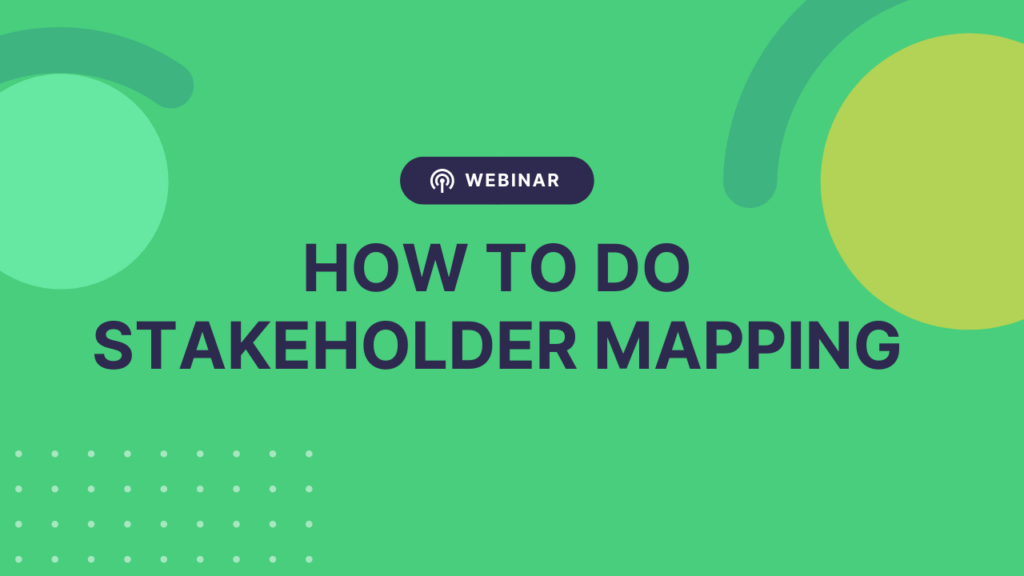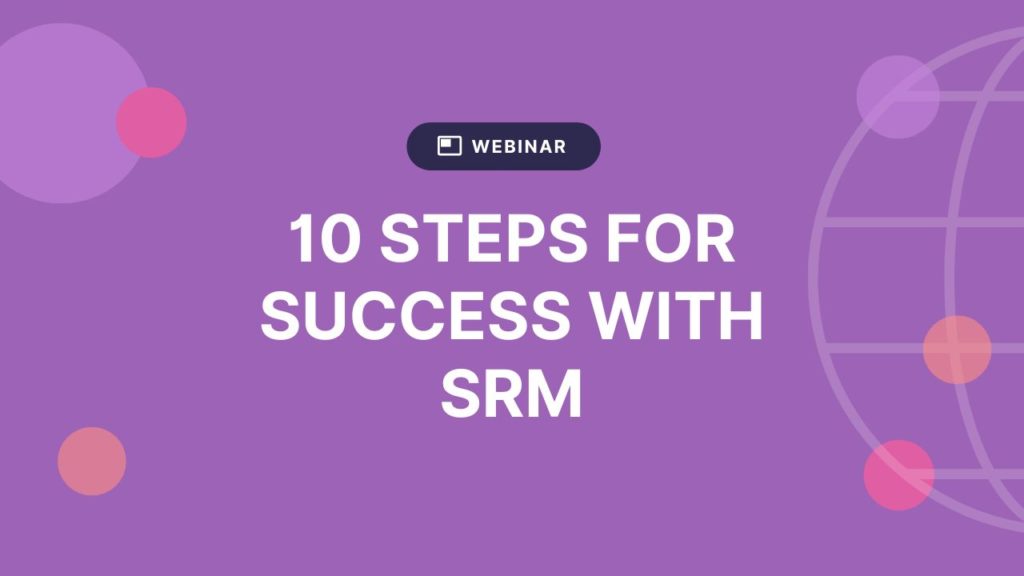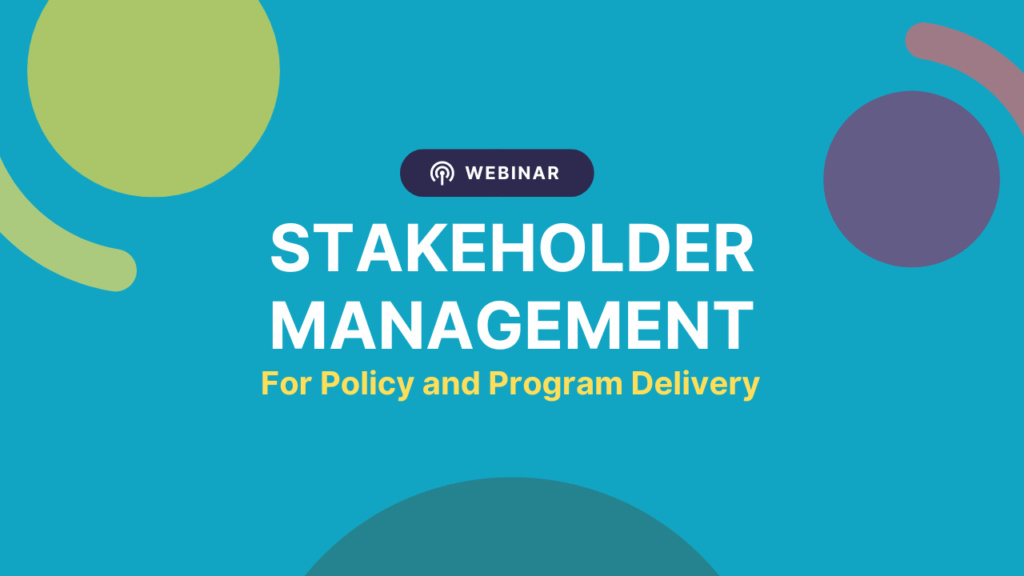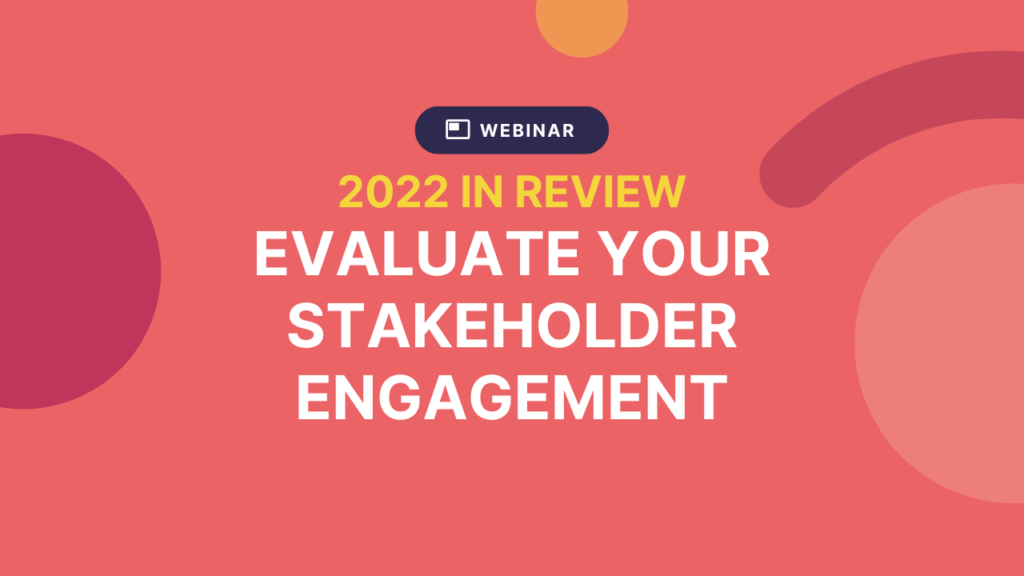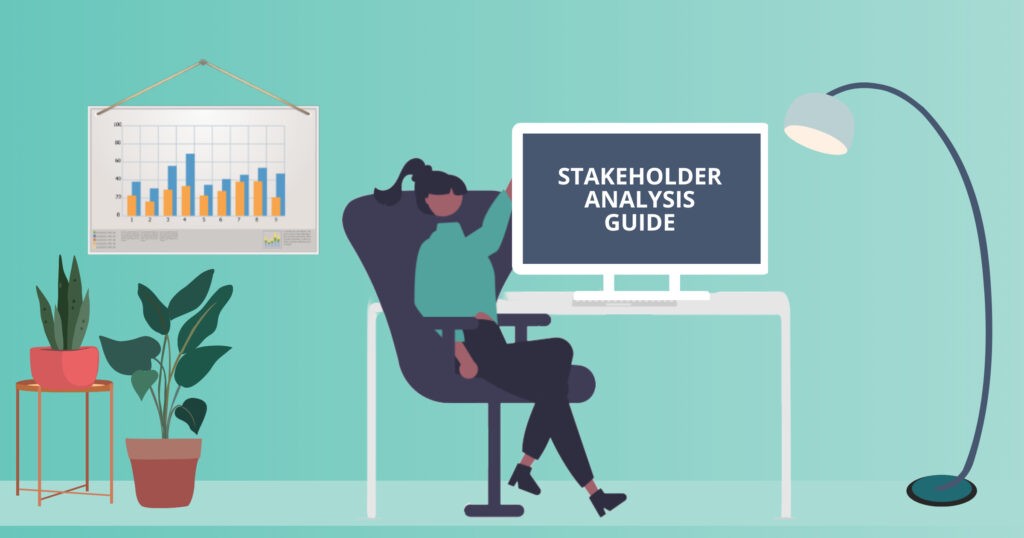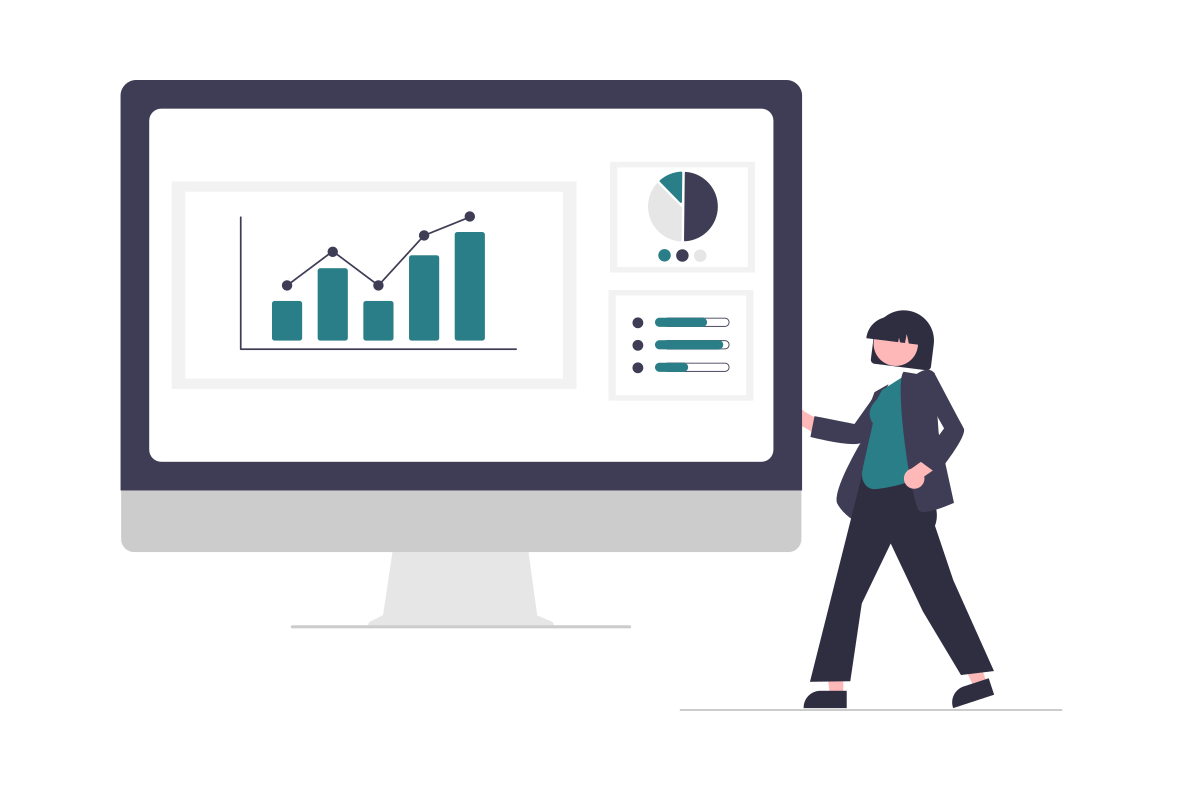Maximizing Engagement with a Dynamic Stakeholder Register
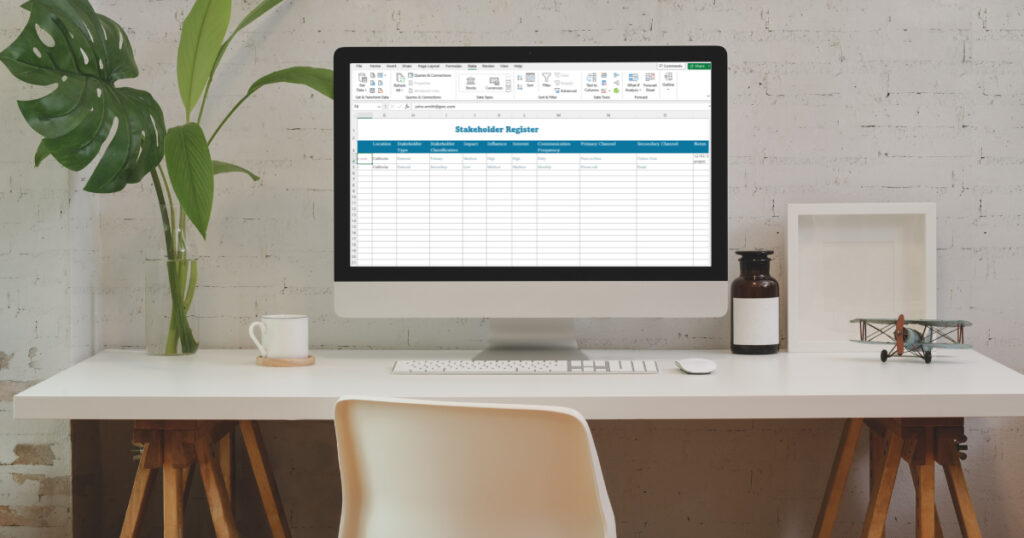
Need to create your first stakeholder register — or rework your register to more effectively support your engagement process?
Good recordkeeping is always best practice for an organization, but it’s essential when you need to manage stakeholders and track any outcomes from your engagement or project. So, let’s take a closer look at what goes into a stakeholder register, what kind of setup to look for, and what steps you can take to create (and maintain) yours.
What Is a Stakeholder Register?
A stakeholder register is one of the tools used to track or manage an organization or business’ stakeholders as part of an engagement or project. In its most basic form, a stakeholder register works similar to a spreadsheet, with sections to record data and details for each stakeholder.
The main use case for a stakeholder register is for recordkeeping, which may be required for compliance, or to help support your stakeholder management or engagement processes. If you record all your data in a single stakeholder register, it can help your team coordinate the engagement with a single source of truth that keeps everyone on the same page. The data within the register may also be used for stakeholder analysis, stakeholder mapping, stakeholder communication, and reporting.
The Elements of a Stakeholder Register
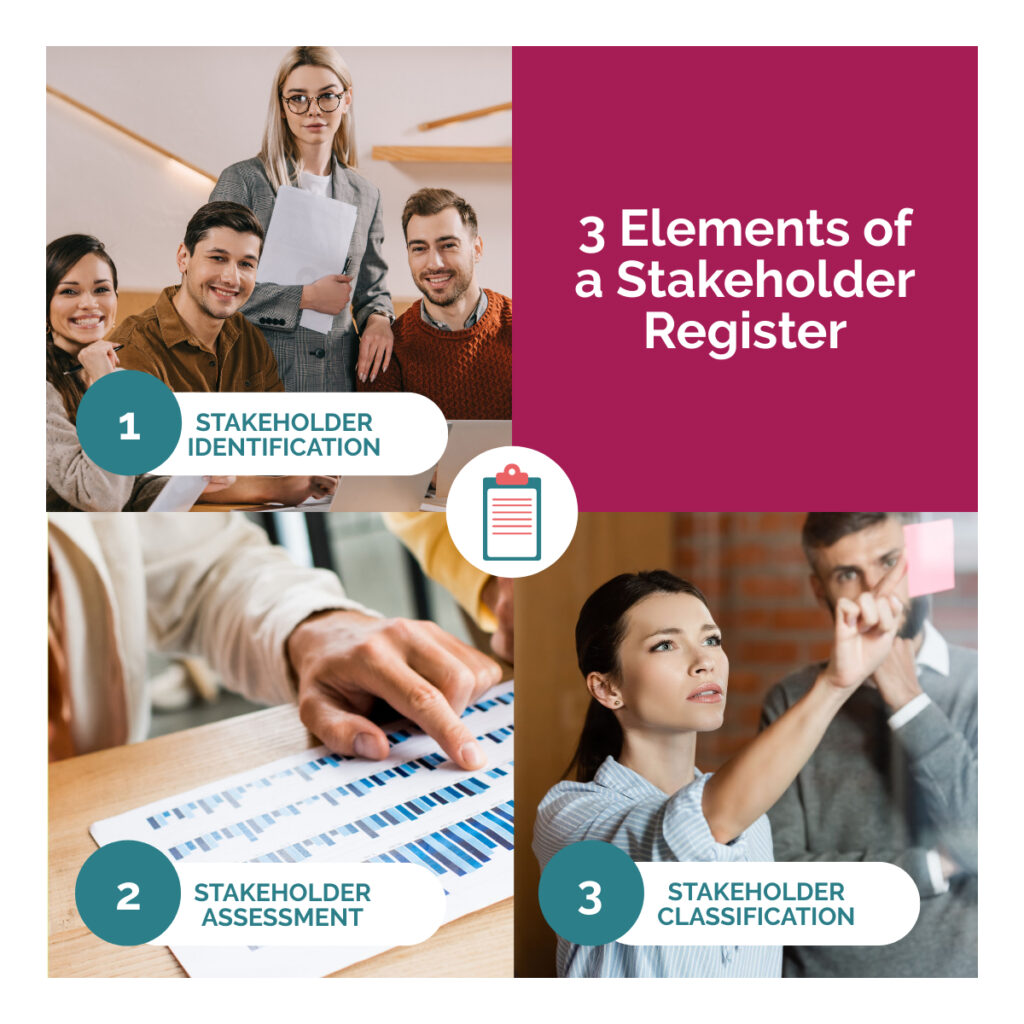
There are three core components that make up a stakeholder register, each building on the last to add more detail. Any column headings found in a simple stakeholder should contribute to either identification, assessment, or classification.
Stakeholder Identification
First thing’s first: a stakeholder register is used to keep a record of any stakeholders you’ve identified. Typically, this includes information you can use to identify and contact each person on your list, such as:
- Name
- Role
- Contact details
- Organization name & size
- Location
- Any other relevant demographic info
This info will be important so that you can begin to analyze your stakeholders and identify your key stakeholders.
Stakeholder Assessment
Once you have your stakeholders identified and recorded in the register, it’s time to conduct a stakeholder assessment. This will require you to evaluate your stakeholders in more detail, noting down characteristics like:
- Level of impact
- Level of influence
- Level of interest
- Level of power
- Specific interests
- Communication needs and preferences
- Relationships
This will allow you to assess your stakeholders using your preferred stakeholder mapping methods, such as the Three Is, the Power-Interest Grid, or stakeholder relationship mapping. These will help you make sense of the data and start to see some patterns that will allow you to group similar stakeholders together. You should also be able to strategically plan your stakeholder approach, determine your priorities, and make the best use of your time.
Stakeholder Classification
The final element of a stakeholder register is classification. Based on your stakeholder assessment, you should be able to categorize your stakeholders with a reasonable degree of confidence to help further segment them into groups for easier management, engagement, or communication. Categorization could include:
- Internal/external
- Primary/secondary
- Community/Regulator/Industry
After classifying your stakeholders, you’ll have a much better idea of how you can approach them, and the different strategies that may apply to each group.
The Advantages of a Modern Stakeholder Register

There are three main ways to create your stakeholder register:
- On Paper – If you want to go truly old school, you could get out your pen, paper, and ruler, and draw up a table in which to record your stakeholder details
- In a Spreadsheet – You likely already have access to Google Sheets or Excel, in which you could quickly whip up a simple stakeholder contact register (and as an added benefit, it’s digital, so easy to update and share)
- Using Stakeholder Software – Most stakeholder software includes a stakeholder register as a core feature
A paper-based approach can actually be handy for your first draft, especially if you’re brainstorming stakeholders with your team. But for obvious reasons, you’ll likely want to move your stakeholder register into the digital world. Although a spreadsheet is easy to update and share, it does have its limitations, such as:
- Difficulty visualizing or analyzing data
- Issues with version control
- Issues with data security
- Very limited functionality
Learn more about why you shouldn’t rely on spreadsheets for stakeholder management.
The best option is to use a modern stakeholder register solution (like we have inside Simply Stakeholders), as these are designed for easy updating and collaboration, and come with loads of other practical features to support stakeholder analysis, mapping, management, reporting, and more.
Creating and Using Your Stakeholder Register: A Step-by-Step Guide
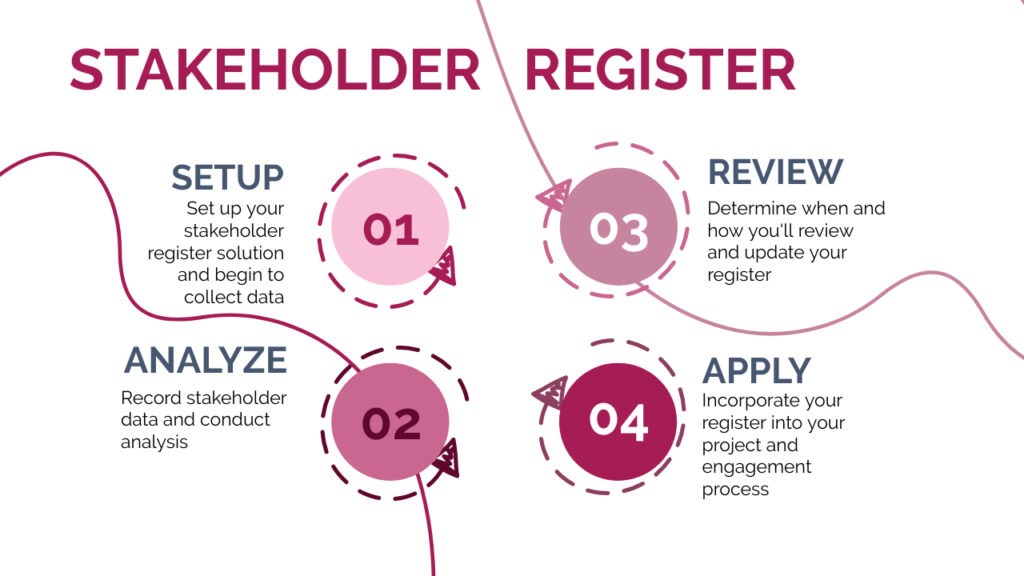
There are four steps to creating a stakeholder register and then effectively applying it to a project or engagement. You could apply these steps as part of a comprehensive stakeholder engagement plan, or simply focus on completing your stakeholder register for now.
Initial Setup and Data Collection
Before you can create your stakeholder register, you need to decide on the format. As we’ve already discussed, you could start with paper, use a spreadsheet, or use purpose-built stakeholder software. The right solution will depend on what you have handy, the complexity of your project and engagement, your budget, and how much time you have available.
Once you’ve got your solution in place, make sure it includes the correct fields for you to record your data for each stakeholder (as discussed previously). This includes their name, demographic info, characteristics, and classification.
Then you’re all set to begin collecting data and recording your stakeholders inside your register.
Not sure how to identify your stakeholders? Remember — a stakeholder is any person, group, or organization that may be impacted by, have an influence on, or an interest in your organization or project. To figure out your stakeholder list, you may want to brainstorm with your team, look at who you’ve been in contact with previously, and or mark down the location of businesses and residents within the vicinity of your project.
Check out our piece on the importance of stakeholders for more details.
Analyzing and Recording Stakeholder Data
How it’s time to begin analyzing your stakeholders, adding further observations and characteristics about each stakeholder in the appropriate column or data field. Note that it may be difficult at first to complete your stakeholder analysis if you’re not familiar with all your stakeholders. You may need to start your analysis with some initial assumptions to supplement what you know, and what you can find out from others (or from your stakeholders directly) and then update your stakeholder register as you learn more.
There are many methods of analyzing your stakeholder data — the best approach will depend on the data you have available, and the characteristics that are most relevant to your project and engagement. If you set up your register in stakeholder software like Simply Stakeholders, you may be able to analyze your stakeholders in just a few clicks. If not, you may need to manually plot your stakeholders on a stakeholder matrix, relationship map, or another type of stakeholder diagram.
Regular Review and Update Procedures
Although you will need to create your stakeholder register at the start of your consultation or project, it’s important that you regularly revisit it to ensure the information is always up to date. If you’re collaborating with other team members, you’ll need to make sure they’re aware of any updates to procedures, such as:
- Referencing the stakeholder register in any relevant planning processes
- Recording new stakeholders immediately
- Transferring any details from paper-based forms or email inboxes to the register as soon as possible
- Adding notes on any interactions with stakeholders
- Regularly checking in with stakeholders to ensure their contact info is still correct
- Updating stakeholder characteristics/classification as they change
Your goal should be to keep your stakeholder register current so that you can rely on it for the most up-to-date information. For more tips, check out our article on how to improve your stakeholder lists.
Utilizing the Register for Effective Engagement
An up-to-date stakeholder register is an invaluable tool for engaging with stakeholders. Some ways to use your register to support your stakeholder engagement campaigns include:
- Collaboration – Accessing the same information will help you coordinate your engagement efforts as a team
- Personalizing – Your stakeholder register can pave the way towards insights that help you segment your stakeholders into groups so you can personalize your approach and communications
- Monitoring – Keeping track of changes to your stakeholders over time, as well as a log of your interactions (and the impact these are having)
- Reporting – Generating reports that show who you’ve been engaging with and how the engagement is impacting project decisions
For instance, if your register recorded that a variety of stakeholder groups participated in engagement opportunities (and especially if it also recorded their specific feedback), this could help to demonstrate that stakeholders were given ample opportunities to have their say on issues.
Stakeholder Register Template
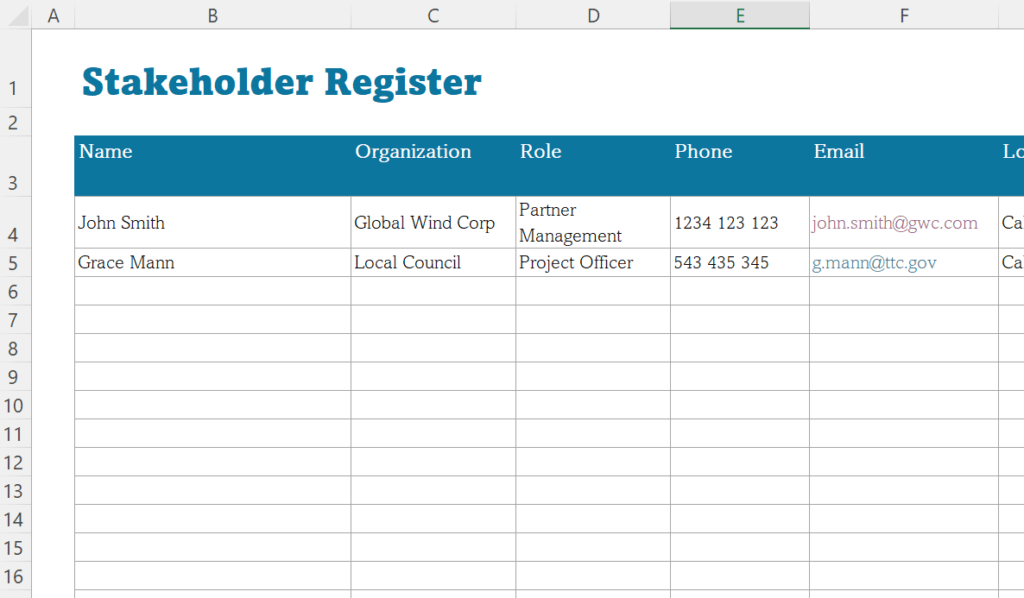
Ready to get started with your own stakeholder register? We’ve created a super-simple Spreadsheet template that could be a handy starting place if you don’t yet have access to stakeholder software. This template is an Excel spreadsheet but should also work in other spreadsheet software, such as Google Sheets.
Download the stakeholder register template here, adapt it to your project requirements, and then begin to fill it out using the steps outlined above.
We’ve included some of the most common types of identification, assessment, and classification data — with pre-filled dropdowns to help speed up the process. Hopefully this template will help you get a headstart on your register.
Transform Your Stakeholder Strategy
An effective stakeholder register is an important tool for project managers and stakeholder professionals — done right, it can help you get clear on your stakeholder strategy and implement it.
Of course, the best kind of stakeholder register is one that’s both easy to use and keep up-to-date. So, why not check out Simply Stakeholders? Features include stakeholder records, analysis, mapping, reporting, issues tracking, and much more.

